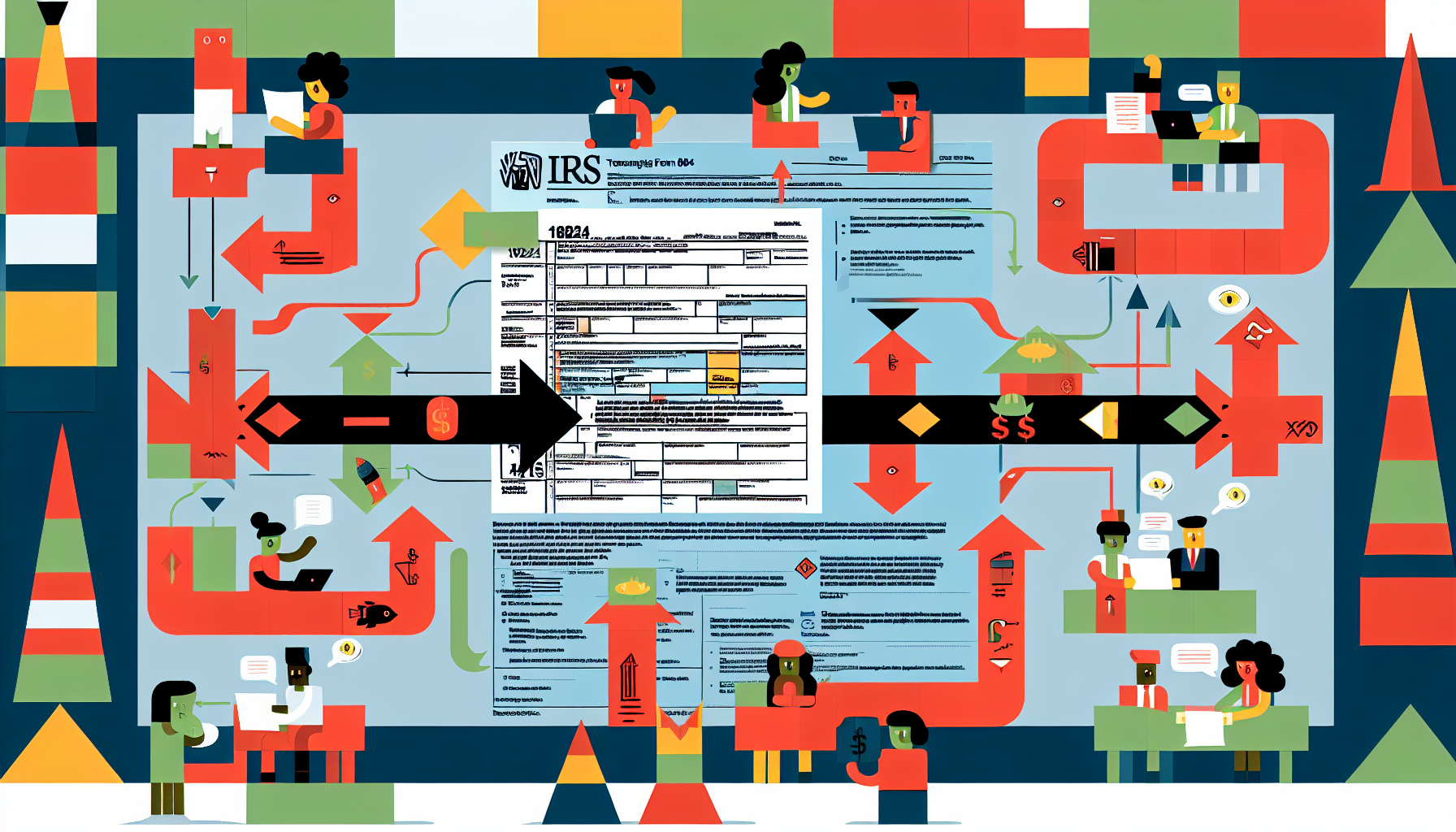Short Answer on How long 1031 Exchange Process Takes:
A 1031 exchange takes up to 180 days, starting with a 45-day period to identify potential replacement properties, followed by a 180-day window to complete the purchase of the identified property.
If you’re delving into the realm of a 1031 exchange, understanding the required timeframes is vital. So, how long for a 1031 exchange? The answer hinges on two pivotal deadlines: a 45-day identification period for designating replacement properties, and a 180-day purchase window to finalize the acquisition. This article will walk you through those key timelines, offering guidance to manage your exchange effectively.
Key Takeaways
- A 1031 exchange allows investors to defer capital gains taxes on property sales by reinvesting in like-kind properties, adhering to strict timelines: a 45-day identification period for the new property and a 180-day deadline to close on it.
- There are four types of 1031 exchanges — delayed, simultaneous, reverse, and construction or improvement — each with specific timing and procedural requirements to qualify for tax deferral benefits.
- Qualified Intermediaries are critical in navigating 1031 exchanges, ensuring legal compliance and safeguarding exchange funds, while investors must meticulously handle identification, timelines, and IRS reporting to reap the tax advantages.
Understanding the 1031 Exchange Timeline

The 1031 exchange, named after Section 1031 of the U.S. Internal Revenue Code, is a strategy that allows investors to defer capital gains taxes when selling a property and reinvesting the proceeds in a like-kind property. Two significant deadlines are fundamental to this process: the 45-day identification period and the 180-day purchase window.
These deadlines are not just random numbers. They have been carefully set to maintain the integrity and compliance of the 1031 exchange. The 45-day identification period is the time frame within which investors must identify potential replacement properties after the sale of the relinquished property. Following this, the 180-day purchase window is the total time allowed from the sale of the initial property to the acquisition of the replacement property.
The 45-Day Identification Period
The 45-day identification period is a race against the clock that begins the day after the sale of the relinquished property. But this is not a simple game of ‘tag’. Specific rules govern this period, and any slip-ups can lead to the forfeiture of the exchange, thus nullifying the tax deferral benefits.
Clear identification rules have been laid out by the IRS. Investors can either identify up to three potential replacement properties of equal or greater value, regardless of their combined value or any number of properties as long as their combined fair market value does not exceed 200 percent of the value of the sold one property. To identify replacement property, the identification must be precise, mentioning the legal description or street address of the new property. The clock stops at midnight on the 45th day, and the choices are sealed. So, choose wisely!
The 180-Day Purchase Window
After the identification period, the 1031 exchange journey continues with the 180-day purchase window. This period mandates that the closing on the replacement property must occur within 180 days of the sale of the relinquished property. It’s important to note that this period includes weekends and federal holidays, so the countdown does not pause.
The 180-day window is more than a guideline; it is a firm deadline. If the purchase of the replacement property isn’t completed within this period, the exchange risks failing to meet the 1031 exchange timeline. Consequently, the tax benefits that the investor was hoping to secure may be forfeited. So, it’s critical to keep an eye on the calendar and ensure that the closing happens in time.
Types of 1031 Exchanges and Their Timelines

Having covered the basics, we now turn our attention to the different types of 1031 exchanges. While they all adhere to the fundamental 45-day identification period and 180-day purchase window, each type has its unique characteristics and timelines.
There are four main types of 1031 exchanges:
- Delayed exchange: This is the most common type and offers investors the flexibility to sell their existing property before acquiring a new one.
- Simultaneous exchange: Both transactions occur on the same day.
- Reverse exchange: The replacement property is secured before selling the existing one, posing a complex timing challenge.
- Construction or improvement exchange: Allows for improvements on the replacement property within specific requirements and timelines.
Delayed Exchange
The delayed exchange, also known as a forward exchange, is the most popular type of 1031 exchange. The process entails selling a property, then identifying and closing on a new one within the specified timeframes.
Also known as a Starker exchange, following the Tax Reform Act of 1984, the delayed exchange follows the 45/180 day limitation, providing a clear timeline for the exchange. This flexibility is what makes the delayed exchange the most preferred choice for investors navigating the 1031 exchange process.
Simultaneous Exchange
The simultaneous exchange, as the name suggests, requires both the sale of the relinquished property and the purchase of the replacement property to occur on the same day. Owing to its limited flexibility, this type is less common than the delayed exchange.
Precision and perfect coordination are necessary for a simultaneous exchange, as any delay can result in disqualification. Therefore, it’s crucial to ensure that both transactions, the sale and the purchase, close exactly at the same time to maintain compliance with section 1031 regulations.
Reverse Exchange
A reverse exchange flips the traditional exchange process, allowing the investor to purchase the replacement property first, before selling the relinquished property. This type of exchange can be more complex and costly due to the need to avoid holding title to both properties simultaneously.
The reverse exchange also adheres to the 45-day identification rule but applies it to the property to be relinquished, not the replacement property. The relinquished property also needs to be effectively marketed for sale during this period, adding another layer of complexity to this type of exchange.
Construction or Improvement Exchange
The construction or improvement exchange is a unique type of 1031 exchange that allows investors to:
- Make improvements on the replacement property using the proceeds from the sale of the relinquished property
- Qualify for full tax deferral
- Spend all exchange equity on the down payment or improvements within 180 days
The requirements for a successful 1031 exchange are as follows:
- The property must be the same as identified on the 45th day.
- The property must be valued equally or higher when returned to the taxpayer.
- Any improvements on the replacement property need to be completed within the allotted 180-day period following the sale of the relinquished property.
Role of Qualified Intermediaries in 1031 Exchanges

The complexities of navigating a 1031 exchange’s process and timeline can prove daunting, highlighting the importance of Qualified Intermediaries (QIs) and real estate agents. These professionals play a crucial role in ensuring compliance with IRS rules and handling all aspects of property transfers.
The responsibilities of a QI include:
- Drafting the legal documents required for a 1031 exchange
- Safeguarding the exchange funds from the sale until the closure on the replacement property
- Holding all proceeds from the sale to preserve the tax-deferred status of the exchange
- Ensuring that the seller does not receive the funds directly
This makes the role of a QI pivotal in the success of a 1031 exchange.
Potential Delays and How to Avoid Them
Despite best efforts, delays can occur during a 1031 exchange. These delays can be due to a variety of reasons, including:
- Mistakes at closing
- Overpaying for replacement properties
- Inadequate preparation
- Lack of understanding of the process
However, these potential pitfalls can be circumvented with proper preparation and a clear comprehension of the process.
One practical tip for investors is to not broadcast their intent to use the property for a 1031 exchange during negotiations. This can help avoid overpaying for replacement properties and related delays. Arranging financing in advance and incorporating a 1031 contingency in agreements can also help ensure that there are suitable replacement properties within the required timeline.
Tax Implications and Reporting Requirements

The main allure of a 1031 exchange lies in its potential tax benefits. By exchanging one investment property for another, investors can defer capital gains taxes, potentially deferring the entire tax liability and reinvesting the full net proceeds from the sale into a replacement property.
However, it’s essential to realize that the tax implications of a 1031 exchange extend beyond merely deferring capital gains taxes. Depreciable property exchanged may trigger depreciation recapture, which is taxed as ordinary income. Plus, any cash remaining after property acquisition, or a decrease in liability, leads to taxation of the capital gain or income. Therefore, accurate reporting using IRS Form 8824 is crucial to avoid significant tax bills and penalties, including those related to capital gains tax.
Tips for Successfully Navigating a 1031 Exchange
A successful navigation of a 1031 exchange demands:
- More than mere understanding of the process and timeline
- Careful planning
- Strategic decision-making
- A deep understanding of the IRS rules and regulations.
One key tip for a successful 1031 exchange is selecting a facilitator who can guide you through the process. This could be a Qualified Intermediary, attorney, or CPA. Also, to ensure a successful exchange, remember the following:
- The replacement property must be of equal or greater market value compared to the relinquished property.
- The replacement property should have the same ratio of debt to equity as the relinquished property.
- Avoid purchasing a replacement property of lower value than the relinquished property, as this could lead to capital gains taxes on the difference, termed as ‘boot’.
Real-World Examples of 1031 Exchanges
Concrete examples can often bring clarity to complex concepts, and 1031 exchanges are no exception. Consider some real-world examples that illustrate the versatility and advantages of this tax-deferral strategy.
One investor, for instance, sold a single-family home for a significant profit and used a 1031 exchange to purchase larger investment properties, like a 16-unit apartment building. This not only increased their net worth but also provided a substantial boost to their monthly cash flow, making them one of the successful real estate investors.
In another scenario, an investor was able to consolidate multiple single-family rental homes into a single investment through a 1031 exchange. This allowed them to secure a Triple Net Lease with a long-term tenant like Starbucks, which provided a stable cash flow and eliminated landlord responsibilities for up to 15 years.
Summary
Navigating a 1031 exchange can be a complex process, but with a clear understanding of the different types of exchanges, their timelines, and tax implications, it becomes less daunting. From the 45-day identification period to the 180-day purchase window, every detail plays a significant role in ensuring a successful and compliant exchange.
The 1031 exchange is a powerful tool for real estate investors. It allows for the deferral of capital gains taxes, thereby freeing up more capital for reinvestment in like-kind properties. Whether you’re considering a delayed, simultaneous, reverse, or construction or improvement exchange, understanding the process and timeline is key to reaping the maximum benefits.
Frequently Asked Questions
What is the timeline for a 1031 exchange?
In a 1031 exchange, you have 45 days to identify potential replacement properties and 180 days to acquire the replacement property, starting from when the relinquished property closes. Be mindful that the exchange is completed within the 180-day period, not 45 days plus 180 days.
What is the 2 year rule for 1031?
In order to comply with the 2 year rule for 1031 exchange, both the taxpayer and the related party must hold the properties received as part of the exchange for a minimum of two years, starting from the date of the transfer or conveyance of the last property.
What is the 90% rule for 1031 exchange?
To fully defer capital gains taxes in a reverse 1031 exchange, the replacement property’s value must be at least 90% of the relinquished property’s sale price.
How long do you have to own a 1031 exchange before you can sell it?
The recommended holding period for a 1031 exchange property is at least two years, although there is no minimum requirement. The IRS emphasizes the investor’s intent over a specific holding period.
What is the 45-day identification period in a 1031 exchange?
In a 1031 exchange, the 45-day identification period is the window during which investors must identify potential replacement properties after selling the relinquished property, starting the day after the sale and ending at midnight on the 45th day.


